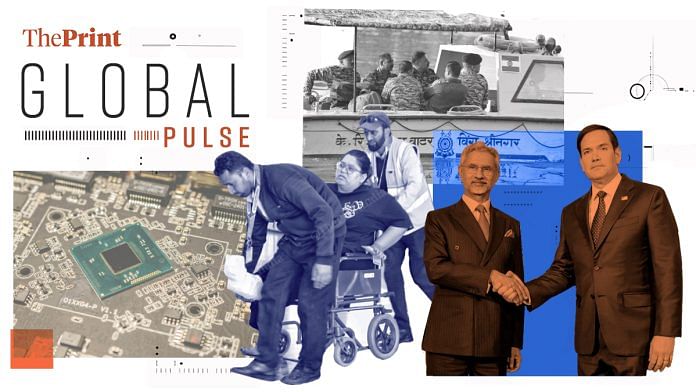New Delhi: More than a week after the deadly Pahalgam attack, its reverberations in the region continue to draw the attention of international media.
As Pakistan waits for India’s response to the attack, it has warned it will respond “assuredly and decisively”. However, quietly, the country is urging a de-escalation, the Washington Post reports. A war would squander the economic interests of both nations, analysts and senior civil servants from Pakistan tell the newspaper.
“Pakistani officials are quietly striking a different tone this time. Neither side would have much to gain from an escalation, they say. After years of surging inflation and suffocating government debt, Pakistan’s economy had just begun to recover in recent months,” write Shaiq Hussain and Rick Noack.
Meanwhile, an editorial in the Financial Times analyses the fault lines between the neighbouring countries and the potentially catastrophic consequences of an escalation, while also pointing out the missing piece of the puzzle—the lack of credible international mediators.
“Though US Secretary of State Marco Rubio urged both sides this week to de-escalate, diplomats feel America is not working the phones as intensively as it did in 2019,” the editorial says.
The international fraternity had once hoped that the US and China would join forces to “play a more constructive diplomatic role in South Asia”. However, now, “it may fall largely to New Delhi and Islamabad to resolve the current clash without allowing it to spiral out of control,” the FT concludes.
FT also has a does a deep dive into Surat’s diamond industry and the looming US tariffs. About 50,000 workers have lost their jobs in the past year, and tariffs are “one more blow to the sector”.
Despite India being a more “domestically-driven economy that is less export dependent than many of its Asian peers,” Prime Minister Narendra Modi has also “acted with haste to placate the Trump administration, ” note Chris Kay, Andrea Rodriguez, and Krishn Kaushik.
The Economist also spotlights the changes in another one of India’s key industries—one that carries geopolitical weight. The Tata Group and Taiwanese chipmaker Powerchip are building India’s “semiconductor city” in Gujarat, the Prime Minister’s home state, says Essential India, the magazine’s India-centric newsletter.
There is a lot that is yet to be seen. Politicians have had to lower their expectations, job creation is due, and government support might fluctuate in the “many years it will take to become internationally competitive”.
Once again, Trump’s tariffs further complicate the matter.
“Tariff wars are likely to give Indian chipmakers some advantage over Chinese ones—but they also risk causing a global economic slowdown that makes foreign tech firms much less willing to invest,” The Economist asserts.
Returning to Pahalgam, Anupreeta Das and Salman Masood report for the New York Times on the global response to a potential military stand-off between India and Pakistan, with a forewarning—“talking the two sides down will most likely be difficult”.
UN Secretary General Antonio Guterres has emphasised the “need to avoid a confrontation that could result in tragic consequences”, while nations like Kuwait and Saudi Arabia have advised both countries to take the diplomatic route.
Also looking at key movers and shakers, Foreign Policy narrows in on the role that could be played by the US in mediating the situation. Although, it might be difficult to predict, given “the messaging thus far from the Trump administration has been mixed”.
Rubio has told both parties to “de-escalate tensions,” while President Donald Trump has issued a vague statement saying they’ll “get it figured out one way or the other”, write Rishi Iyengar and John Haltiwanger.
While the India-US friendship has “deepened in recent years and flourished under Biden”, Washington’s military equation with Pakistan dates back much further, the report says. It can leverage this, including a $397 million exemption for F-16 jets from its massive foreign aid cuts earlier this year. It “allegedly included a monitoring program to ensure that the jets were used for counterterrorism and not against India”.
(Edited by Sanya Mathur)
Also Read: From water wars to geopolitical fallout, the Pahalgam attack & its many ramifications






